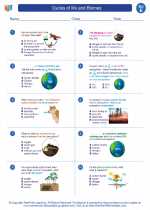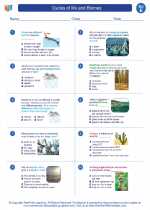What are Canyons?
A canyon is a deep, narrow valley with steep sides. It is usually carved by a river or erosion caused by natural forces such as wind and water.
Formation of Canyons
Canyons are formed through a process called erosion. Erosion occurs when natural forces such as water, wind, and ice wear away the earth's surface over time. The formation of canyons can be attributed to several factors such as the movement of tectonic plates, volcanic activity, and the natural flow of rivers.
River Erosion
Most canyons are formed by the erosive power of rivers. Over millions of years, rivers carve deep channels into the earth, forming canyons. The Colorado River, for example, has carved out the Grand Canyon over millions of years through its powerful erosive force.
Wind and Water Erosion
In arid regions, canyons can also be formed by the combined forces of wind and water erosion. Wind-blown sand and sediment can slowly erode the sides of a canyon, while intermittent flash floods can carve out the canyon floor, creating the characteristic narrow, steep-sided valleys.
Characteristics of Canyons
Some common characteristics of canyons include steep cliffs, narrow passages, and a river or stream running through the canyon floor. Canyons can vary in size from small, narrow gorges to vast, expansive valleys such as the Grand Canyon in the United States.
Study Guide
- What is a canyon?
- How are canyons formed?
- What are the primary forces of erosion that contribute to canyon formation?
- Give an example of a famous river that has carved out a canyon.
- What are some common characteristics of canyons?
- Discuss the role of wind and water erosion in the formation of canyons.
Understanding the formation and characteristics of canyons can provide insights into the powerful forces of nature and the geological processes that shape our planet.
[Canyons] Related Worksheets and Study Guides:
.◂Science Worksheets and Study Guides Fifth Grade. Cycles of life and Biomes

 Worksheet/Answer key
Worksheet/Answer key
 Worksheet/Answer key
Worksheet/Answer key
 Worksheet/Answer key
Worksheet/Answer key
 Worksheet/Answer key
Worksheet/Answer key
 Vocabulary/Answer key
Vocabulary/Answer key
 Vocabulary/Answer key
Vocabulary/Answer key
